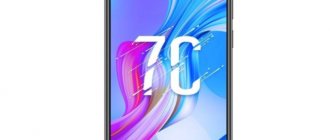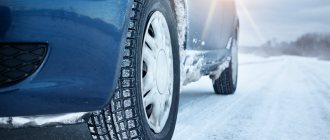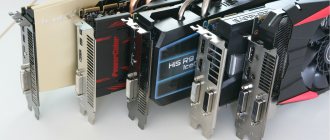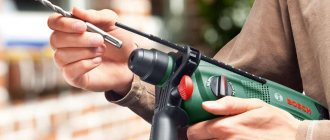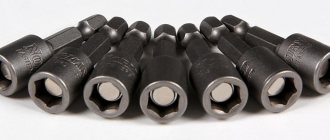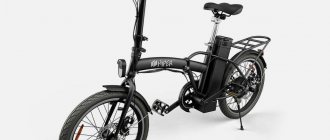Testing winter tires is considered a labor-intensive task. Potential buyers prefer to familiarize themselves with the samples included in the top best winter tires and the test results to the maximum extent. Wheel tests are carried out at special test sites; qualified experts test and summarize the results. Tire manufacturers, motorists, and companies selling these products show great interest in the results of annual tests. The article presents a rating of winter tires 2021 - 2021, both with studs and non-studded. The most popular proven models are discussed here.
Table: Top 12 best tires
| Model | Best Features | Diameter, R | Run Flat | Maximum speed index | |
| Pirelli Ice Zero | studded according to reviews | 14/15/16/ 17/18/19/ 20/21/22 | optional | H (up to 210 km/h) | Find out prices |
| Bridgestone Blizzak Revo GZ | studless tires according to reviews | 13/14/15/ 16/17/18/ 19 | No | S (up to 180 km/h) | Find out prices |
| Continental IceContact 2 | studded 2021 - 2017 | 13/14/15/ 16/17/18/ 19/20/21 | optional | T (up to 190 km/h) | Find out prices |
| Continental ContiWinterContact TS850 | studless 2021 - 2017 | 12/14/15/ 16/17/18/ 19/20/21 | optional | W (up to 270 km/h) | Find out prices |
| Continental IceContact 2 SUV | studded for crossovers | 15/16/17/ 18/19/20/ 21 | optional | T (up to 190 km/h) | Find out prices |
| Bridgestone Blizzak DM-V2 | studless for crossovers | 15/16/17/ 18/19/20/ 21/22 | No | T (up to 190 km/h) | Find out prices |
| Nokian Tires Hakkapeliitta 5 | inexpensive | 13/14/15/ 16/17/18/ 19/20 | optional | T (up to 190 km/h) | Find out prices |
| Cordiant Winter Drive | budget (Velcro) | 13/14/15/ 16/17 | No | H (up to 210 km/h) | Find out prices |
| Nokian Tires Hakkapeliitta 8 | studded, “Behind the wheel” test | 13/14/15/ 16/17/18/ 19/20/21 | optional | V (up to 240 km/h) | Find out prices |
| Nokian Hakkapeliitta R2 | studless, “Behind the wheel” test | 15/16/17/ 18/19/20/ 21 | optional | R (up to 170 km/h) | Find out prices |
| Nokian Tires Hakkapeliitta 9 | studded, Autoreview test | 16/17/18/ 19/20/21/ 22 | optional | T (up to 190 km/h) | Find out prices |
| Nokian Tires Hakkapeliitta R2 SUV | studless, review "Autoreview" | 14/15/16/ 17/18/19/ 20/21 | optional | R (up to 170 km/h) | Find out prices |
Pirelli Ice Zero - the best winter studded tires according to reviews (2019 - 2020)
In the ranking of studs for winter, pride of place is occupied by Pirelli Ice Zero tires with effective braking and good stability. They hold the road well at speed, behave confidently on steep snow-covered inclines, brake and stop quickly and completely, after which the car starts moving without problems.
No tendency to skid, good grip on compacted and loose snow and ice. The rubber is soft, quite noisy, but not critical. The noise is noticeable mainly on asphalt surfaces, but not audible on snow. A large number of studs, which results in reduced braking speed on asphalt. But it confidently handles any road.
Pros *
- braking;
- directional stability;
- grip on ice, snow (loose, compacted);
- holds any road.
Minuses *
- noisy, on asphalt;
- reduced braking quality on asphalt due to a large number of studs.
Features of winter tires
During the production of tires intended for use on cars in frosty weather, manufacturers use special technologies and materials. The rubber composition determines the properties and technical characteristics of the product. When making winter “shoes” for cars, the manufacturer adds special additives to the composition and uses materials that do not lose elasticity. If you drive a car with summer tires on the road when the air temperature is below zero, you will notice how the tires become hard and do not provide good grip on the road. Another important parameter is the tread pattern of winter tires.
On winter tires it is much deeper and wider than on summer tires. To ensure the car proper directional stability on roads in snowy weather, tires with wavy-shaped lamellas are used - thin, deep cuts, as if made with a knife, sometimes forming the most bizarre patterns. Thanks to such a clever engineering solution, the traction of the car's wheels with the road and lateral stability when passing snow-covered sections of the road are improved. Manufacturers are constantly improving the lamellas, giving them a variety of shapes, thus influencing the behavior of the car on a snowy or icy road. For example, zigzag sipes provide better grip on ice.
Bridgestone Blizzak Revo GZ – the best winter non-studded tires according to reviews
Among velcro tires, the leading place in the ranking is occupied by Bridgestone Blizzak Revo GZ winter tires. They became the best in their category according to reviews and tests. Studless tires have a powerful sidewall, which provides excellent handling. There is practically no noise: quiet, soft, holds the road, and takes turns.
Studless tires are an ideal option for cities where winters have little snow but are cold. Comfortable tires with which you can confidently drive your car at any speed. In the snow they behave almost the same as studded ones. They react clearly and practically without delay to steering wheel turns.
Pros *
- quiet;
- softness;
- acceleration;
- high-quality grip;
- controllability;
- braking on compacted snow and asphalt.
Minuses *
- braking on ice is worse;
- sufficiently rigid passage of uneven asphalt;
- At temperatures above zero there is a feeling of floating tires.
Top 2. Bridgestone Blizzak Ice
Rating (2021): 4.77
158 reviews from resources were taken into account: Yandex.Market, Otzovik, Mosavtoshina
The best tires for urban winters High resistance to impact loads and wear, high grip characteristics and low noise levels make Bridgestone Blizzak Ice the optimal choice for warm winters.
- Characteristics
Average price: 3938 rub.
- Country: Japan
- Tread pattern: asymmetrical
- Speed index: S
Thin ice, melting slush and water on the asphalt – this is the best “habitat” for Bridgestone Blizzak Ice winter tires. The asymmetry of the tread blocks and the successful selection of rubber mixtures provide confident grip when braking and high-speed maneuvering in such conditions. It is actively chosen by residents of cities and southern regions, where winter is traditionally mild. Studless tires hold up well against impacts, are wear-resistant and are quite acoustically comfortable. These same characteristics also became the reason for the tire’s weakness - it immediately transmits all the unevenness of the road to the steering wheel and into the car’s interior.
Advantages and disadvantages
- Quiet
- Wear resistance
- Balanced price
- Sensitive to road irregularities
- The tread gets clogged quickly in the snow
3. Continental IceContact 2 - the best winter studded tires (2018 - 2019)
Quiet, comfortable tires with Continental IceContact 2 studs. Produced in Russia using German equipment, the quality of the tires is high, comparable to their European counterparts. At the same time, the price is affordable. They hold the road, there is no sudden stalling when skidding on ice, they are controlled smoothly and confidently. Good handling both on asphalt and on snow or ice; there is no roll when cornering.
It brakes excellently on any surface and holds the road, including in icy conditions. Well balanced, practically no rutting. There is no characteristic noise of unbroken studs, while there are more studs on the tire itself than on noisier analogues, and the studs do not fly out. The rubber is soft, but still holds the course perfectly.
Pros *
- handling on any track;
- lack of rolliness when turning and changing lanes;
- absence of characteristic noise of spikes;
- road traction.
Minuses *
- some noise, but no discomfort;
- price.
Market news 2018-2019
Manufacturers are releasing improved tire models for the new season. Developments include innovative techniques and updated design solutions.
Yokohama has released a technologically advanced design of the iceGUARD iG60 studless tire for passenger cars. The manufacturer presented more than 90 size categories from 135/80 R13 70Q. The tire design uses Premium Water Absorbing Rubber technology, which prevents slipping on icy roads. The protectors use a new rubber composition.
The Maxxis Premitra Ice Nord NS5 studded model is designed for northern territories and is included in the review of winter tires for crossovers and off-road vehicles for the 2018-2019 season. The tread is equipped with directional lines that improve handling on snowy roads and icy surfaces. The grooves on the tread are located in different directions, which allows you to move on surfaces covered with snow and ice. Special inserts absorb water. The spikes are placed in 14 rows.
4. Continental ContiWinterContact TS850 - the best winter studless tires (2018 - 2019)
Among studless winter tires, the leader is the Continental ContiWinterContact TS850. According to reviews, these are truly quiet, comfortable tires with good handling and grip. It holds the track in heavy snow, and on ice there is also good grip for non-studded tires.
Excellent tires for those who prefer silence and comfort when driving in the winter season. The tires are soft, comfortable, without a sporty bias; they drive on asphalt without snow at almost summer speeds. Slower in deep snow or slush. Directional stability is above average, response to steering movements is moderate.
Pros *
- quiet;
- good handling;
- grip with the road;
- comfort.
Minuses *
- some sizes are difficult to find;
- not suitable for driving in deep snow or slush; they skid;
- average directional stability.
The best winter tire manufacturers
Specialized tire manufacturers include tires for the cold season in their product line and have positive reviews from car owners (Nokian, Dunlop, Michelin, etc.).
The leader of the rating, the Nokian concern (Finland), has been manufacturing tires since 1898. The company has been developing winter varieties since the 1st half of the 20th century. Products are high quality, reliable and safe. Winter tires are adapted to the climatic conditions of Russia with temperature changes and precipitation in the form of snow. Tire varieties are designed to suit the types of vehicles.
Goodyears (USA) produces winter tires for different climate zones and types of vehicles. The products are durable, maintain a high level of vehicle grip and maneuverability. The products are of high quality and provide cross-country ability in snow drifts.
Continental IceContact 2 SUV – studded tires for crossovers and SUVs
If you have a crossover or jeep, pay attention to the Continental IceContact 2 SUV winter tires. The rubber holds up well on any surface, including icy conditions. Quiet, soft, the steering response increases with it, the chassis works better.
Moderately noisy winter tires, comfortable, a good option for both big cities and trips out of town. High-quality braking on dry and wet asphalt, in this quality there are practically no differences with studless tires. It runs and brakes well in the snow, and has good cross-country ability in slush. It walks and brakes confidently on ice and packed snow, there is no rutting on the asphalt, and there are no lateral stalls.
Pros *
- low noise;
- road grip;
- softness;
- holds the road in ice and snow;
- reliability.
Minuses *
- high price;
- Soft sidewall but still durable.
Criteria for choosing tires for winter
In addition to the size (in our case it is R16), brand and price, the owner should pay attention to the following tire parameters:
Tread pattern.
The symmetrical directional arrangement of the blocks of the working part of the tire determines excellent resistance to aquaplaning and good directional stability. This tire quickly picks up speed and is considered more economical. Asymmetry gives better stability when maneuvering, holds a straight trajectory well and drains water well from the contact patch.
Oshipovka.
The presence of lugs gives confidence on a winter road, where compacted snow alternates with ice and slush. In conditions of clean or wet asphalt, such a tire is less practical, it is noisy, and the studs wear out quickly.
Lamels.
The more multidirectional cuts along the tread, the more confidently the wheel “bites” into the surface. Velcro tires with an increased number of sipes cope well without lugs, maneuver confidently on wet roads and drive predictably on snow and ice. In the latter case, the braking distance is expected to be longer than that of studded tires.
Sidewall.
Soft sidewalls are common for winter tires. This feature gives stability on difficult surfaces, but during high-speed maneuvering it can lead to rolliness. If this part is rigid, handling and shock resistance will increase, but the tire will become sensitive to the ruts.
Bridgestone Blizzak DM-V2 – studless tires for crossovers and SUVs
To ensure safety while driving in winter, owners of jeeps, crossovers, and SUVs prefer studless tires from a well-known brand - Bridgestone Blizzak DM-V2. Driving on such cars is often more aggressive, on ruts, potholes, and different surfaces. The tires behave well on wet asphalt and dry surfaces, and feel confident in slushy snow. Cup protectors allow you to walk in the snow without slipping.
The tires remain soft at any temperature, which allows them to remain silent in any weather.
“Swallows” small cracks and potholes on the asphalt. On clean and smooth ice, the Velcro has a fairly long braking distance; at temperatures above -10, it is very slippery on ice and compacted snow and can skid. But in frosts of -15 or more, the grip is more confident on ice, on compacted snow, and on any surface.
Pros *
- value for money;
- holds any road;
- excellent grip;
- behaves well in the snow, in slush;
- soft at any temperature;
- silent.
Minuses *
- drifts on compacted ice;
- it’s hard to get out of a rut;
- long braking distance on ice.
Nokian Tires Hakkapeliitta 5 – inexpensive studded tires for winter
In the budget segment of studded winter tires, Nokian Tires Hakkapeliitta 5 have proven themselves with a long service life. The tires do not have spikes coming off, and the tires hold the road well in mixed driving styles. The tread does not wear off for a long time, the studs do not allow air to pass through.
The studded Nokian Tires Hakkapeliitta 5 handle equally well on ice and snow; on asphalt they brake a little worse, which is understandable for this type of winter tire. The rubber has excellent build quality and the installation of studs, allowing it to hold the road well even in part-time drive. They have a long service life and do not wear out for a long time.
Pros *
- holder;
- long service life;
- high-quality assembly and installation of studs;
- handling (ice, snow - compacted or loose);
- The stud does not allow air to pass through.
Minuses *
- relatively high cost;
- Brakes worse on asphalt than on ice and snow.
Cordiant Winter Drive – budget studless winter tires (Velcro)
Among studless tires, the so-called Velcro tires, in the budget category, according to reviews from car owners, Cordiant Winter Drive took pride of place. Almost silent, it moves and brakes well in slush, loose and compacted snow. On ice it behaves somewhat weaker, however, in city conditions good handling is maintained.
Completely predictable behavior of a car with Cordiant Winter Drive tires, abrasion-resistant, soft, with good tread, but at temperatures from 5 degrees above zero it begins to “float”. An excellent option for a quiet winter ride; it handles well in the snowdrifts.
Pros *
- predictable behavior on various surfaces;
- does not wash off;
- soft;
- good tread;
- acceptable cost.
Minuses *
- braking on ice is worse;
- somewhat noisy for a non-studded shoe;
- floats at temperatures above +5.
Nokian Tires Hakkapeliitta 8 – studded tires: test by Za Rulem magazine
Nokian Tires Hakkapeliitta 8 tires were tested by Za Rulem magazine and named the best studded tires for winter driving. It has diamond-shaped spikes, and not just pins, it behaves confidently both on the asphalt and in ruts, it does not lead or throw. When cornering, the tires behave smoothly and predictably.
On fresh wet snow, on frozen ice crust, compacted snow and ice it behaves confidently and predictably, brakes clearly and confidently along a predictable trajectory. When cornering, the rear axle can drift a little, but it is quite controllable. On ice it behaves the same as on asphalt within a reasonable speed, there is noise in the range from 60 to 110 km/h.
Pros *
- diamond-shaped spines;
- no rutting;
- cornering control;
- does not float on asphalt;
- holds the road (ice, snow, porridge).
Minuses *
- price;
- noisiness.
Winter tire tests 2018-2019 (Behind the Wheel, Autoreview, ADAC, Auto Bild)
To answer your question as fully as possible, which winter tires are better, we looked for information in the following sources:
Magazine "Behind the Wheel"
This is the oldest (published since 1928) Russian publication dedicated to cars and the automotive industry. The 2021 winter tire test “Behind the Wheel” is an indicator of the high quality and reliability of a particular model.
“Behind the Wheel” test results – click to open in full window
Newspaper "Autoreview"
In the past, it was a Soviet and now a Russian automotive publication that tests both cars and child seats, tires, fuel and various car accessories. The 2021 Autoreview winter tire test was carried out last winter on the tracks of the White Hell test site in Finland, with temperature changes from 5 to 23 degrees below zero.
ADAC
The largest automotive organization not only in Germany, but also in Europe. Not every candidate will pass the tire testing carried out by ADAC. For example, in last year's summer tire test, only 6 out of 16 models passed all the tests on wet and dry roads. And the requirements for winter tires are even stricter, because they have to withstand much more severe conditions.
Auto Bild
This German car magazine is published under license in 36 countries. It publishes reviews of new models, tests of new and used cars, as well as news related to the world of the automotive industry.
Nokian Hakkapeliitta R2 – studless tires: test by Za Rulem magazine
Quiet studless tires for driving in winter, one of the best according to tests by the magazine “Behind the Wheel” - Nokian Hakkapeliitta R2. It holds the road well on ice, freshly fallen snow and slushy snow; it behaves confidently when changing lanes and parking, including in parking spaces that have not been cleared of snow.
The rubber is strong, small holes, joints, bumps and tram tracks are not felt at speed, they pass very smoothly. An excellent option for winter tires for use in urban areas. In warm weather above +5, the car reacts worse to steering wheel turns, and when overtaking, ruts appear. However, rubber wears out and wears out quite quickly, but this does not have much effect on the “stickiness”.
Pros *
- quiet;
- soft;
- sustainability;
- holds the road well;
- high speed index.
Minuses *
- relatively fast wear;
- price.
11. Nokian Tires Hakkapeliitta 9 – studded tires: Autoreview test
According to tests carried out by the Autoreview magazine, Nokian Tires Hakkapeliitta 9 became the best winter studded tires. Yakohama tires hold the road well, are soft, and ride on snow as if they were on asphalt. They behave confidently when cornering at high speed and during emergency braking.
The car goes uphill on these tires without slipping, and does not skid when turning on ice. The rubber is not afraid of ruts, including icy ones, the studs work 100% on ice, the handling is comfortable and predictable. It also handles well in slushy snow and has a short braking distance. Tires for snowy roads. At low speed there is no noise, it appears when the car travels over 120 km.
Pros *
- no rutting;
- no noise at medium speeds;
- holds the road;
- emergency braking;
- holds turns confidently.
Minuses *
- price;
- The break-in period is longer than with similar tires.
12. Nokian Tires Hakkapeliitta R2 SUV – studless tires: review “Autoreview”
Nokian Tires Hakkapeliitta R2 SUV tires drive along a snowy road at speeds above 100 km. They also perform well on the road with freshly fallen snow, in slush, on clean asphalt and even in puddles. Very quiet and soft tires, grips the road with any asphalt surface.
The car has good directional stability and a short braking distance. Nokian Tires Hakkapeliitta R2 SUV tires are suitable for the middle zone with mild winters, because the quality of handling decreases on purely winter surfaces and conditions. At the same time, with such tires the car goes through deep snow.
Pros *
- quiet;
- cross-country ability in snowdrifts;
- confidently keeps track;
- cross-country ability on ice, slush, and puddles.
Minuses *
- price;
- increased fuel consumption.
Choosing the right winter tires
For their manufacture, a special chemical composition is used to provide winter tires with the required properties. Car tires need to be changed depending on the season: it is recommended to change your car to winter tires when the temperature does not rise above 5-7 C during the week. To choose suitable winter tires, you should follow some recommendations.
Key characteristics of good winter tires
Run Flat Technology
Decide on the budget you are willing to spend on purchasing a set of winter tires. As a rule, the cost of tires is determined by the brand and country.
Winter tires can be studded or fractional, that is, non-studded (Velcro) - this is probably the main selection criterion. Moreover, non-studded ones can be European and Scandinavian. Each type is suitable for its own operating conditions:
- Studded - high-quality grip on the road surface and braking. They are intended for use on hard ice, an option for regions where winters are cold and harsh, with frequent ice conditions and for use outside the city. Such rubber is noisy, which is explained by the presence of spikes; it quickly wears off on asphalt and loses its characteristics.
- Studless Scandinavian tires are recommended where the winter is long and there is a lot of snow. They are not afraid of snowdrifts and snow drifts. Road traction is provided by treads: the more lamella cavities there are, the better the grip on the snow surface. There are also lugs along the outer edge of the tread, which provide the maximum contact patch. Recommended for use at temperatures significantly below -0 and below, on roads with a lot of snow. Such tires are soft and therefore not suitable for driving on ice, and on dry asphalt their wear resistance sharply decreases and they float.
- Studless tires of the European variety are an ideal choice for use in regions with mild winters, where sleet or rain often falls. They walk through slushy snow and are safe at high speeds. But in icy conditions and on compacted snow, the road grip characteristics are worse, when driving on dry asphalt at low temperatures, with slushy snow.
It is also important to look at the manufacturing date of winter tires, since the shelf life of winter tires is 5 years. Wear resistance indicator, the index is indicated on the sidewall.
It is better to choose the maximum indicator. Also, modern car tires are equipped with Run Flat technology: even when the tire deflates, it remains on the rim and remains able to bear the weight of the car.
Another indicator is the speed index: each tire model is designed for use in the speed range in which optimal adhesion of the rubber to the road is guaranteed.
Manufacturers
Previously, Scandinavian brands were considered the best producers of winter tires. But Russian companies produce tires with qualities that are not inferior to either their Scandinavian or European counterparts. Among Russian brands it is worth noting Amtel, Cordiant, Kama, Nokian.
Among European manufacturers of winter tires, Barum, Continental, Matador, Michelin are popular, and Japanese ones are Bridgestone.
Moreover, Nokian occupies a leading position in ratings based on reviews, as well as tests in car magazines, leaving French, Japanese and other competitors far behind. At the same time, it cannot be said unequivocally that Japan or France make tires for the Russian winter better than domestic manufacturers.
Based on the above rating, as well as recommendations for choosing tires, every car enthusiast will be able to make the right choice.
What to look for when choosing winter tires
In addition to the main two differences (studded/non-studded), winter tires have many additional criteria that you need to rely on when selecting tires:
1 The size and type corresponding to your vehicle are recorded in the service book. If you don't have it, you can look up the car's specifications on the Internet.
2 The date of manufacture of tires should not exceed three years. It is written on the side of the tire in the form of 4 numbers. The first pair represents the week, the second pair represents the year.
3 The reinforced frame is marked XL. This type of rubber is more durable and has a greater load capacity. These same tires are best used on SUVs.
4 The noise level from studded wheels is several times higher than from Velcro. Velcro can be installed without fear in the off-season, when the weather is unclear.
5 Winter tires have their own type of tread - it has more sipes at different angles, which improves the grip properties of the wheel. The rubber itself is softer than summer tires, so it doesn’t harden in the cold.
6 Various manufacturers are developing innovative technologies that improve the technical characteristics of tires.
The cost of winter tires is determined by many factors, not the least of which is the reputation of the manufacturer. But in any case, you can find excellent options on the market for any budget.
back to menu ↑





